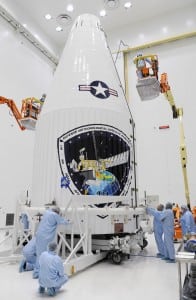
United Launch Alliance (ULA) said Tuesday its forecast shows a 90 percent chance of favorable weather conditions for Thursday’s launch of a Defense Meteorological Satellite Program (DMSP) satellite. The launch is to take place at 10:46 a.m. EDT on an Atlas V rocket from Vandenberg AFB, Calif. ULA added there is a 40 percent overall probability of violating weather constraints for a 24-hour delay. These include thick clouds and cumulus clouds. ULA spokeswoman Jessica Rye said Tuesday cloud cover impacts…













